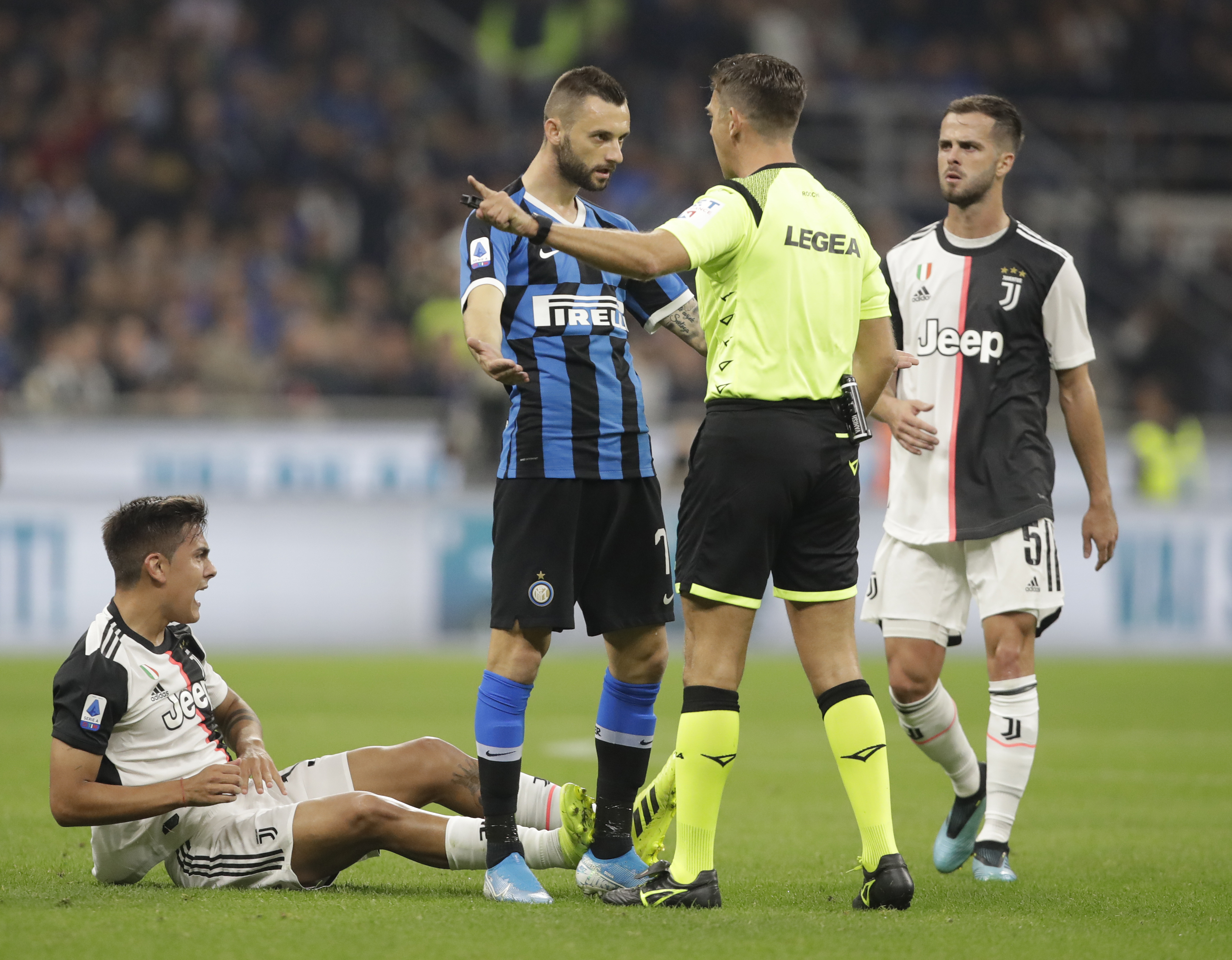
FILE – In this file photo taken on Oct. 6, 2019, Inter Milan’s Marcelo Brozovic argues with referee Gianluca Rocchi during a Serie A soccer match between Inter Milan and Juventus, at the San Siro stadium in Milan, Italy. (AP Photo/Luca Bruno)
ROME, Italy—A recent modification by soccer’s rule-making panel is the culprit behind a significant increase in VAR dependence—and controversy—in Serie A this season, according to Italy’s refereeing director.
Nicola Rizzoli, who officiated the 2014 World Cup final and now handles the Italian league’s refereeing appointments and technical matters, said at a heated meeting among Serie A stakeholders that constant checks for involuntary handballs is putting too much strain on the video review system.
In 119 Serie A matches through 12 rounds this season there have been 790 incidents checked by the VAR, which translates to 6.6 checks per match. That’s up from 657 checks and 5.4 per match at this point last season.
Perhaps more alarming is that the instances in which VAR has corrected a referee’s decision on the field have doubled from last season—from 24 to 48.
“It means we’re not refereeing well,” Rizzoli said. “But also that the rules have changed.”
At Tuesday’s refereeing summit attended by all 20 Serie A clubs, Napoli coach Carlo Ancelotti said VAR dependence was spiraling out of control.
“Who is refereeing the games?” Ancelotti said. “At times I get the impression that some games are being decided by the VAR.”
While Rizzoli replied to Ancelotti by saying that “the referee is always at the center of the decision-making process,” the new rules mean that referees no longer have to consider intent on handballs. But nearly any sort of touching above the shoulders or by making the body “unnaturally bigger” is a foul.
Juventus defender Matthijs de Ligt has been at the center of the controversy.
The Netherlands international conceded penalties to Inter Milan and Lecce with handballs this season but appeared to get away with another handball during a derby with Torino.
Rizzoli used a slide of Leonardo da Vinci’s Vitruvian Man drawing to illustrate the complexities of the rule.
“The handball is one of the most challenging situations the referees have to judge,” Rizzoli told The Associated Press after the meeting, adding that the IFAB rules panel should consider “adjustments” after this season.
“The intention of the player, the touch with the arm, the position of the arm—everything. And the dynamic also of the situation,” Rizzoli added. “We have to think (about) a lot of things.”
Captains communication
The increase in VAR checks has resulted in an increase in angry player protests.
Rizzoli appealed to teams to curtail the protests and reminded them to make sure only the captain addresses the referee.
“If the captain comes we are obliged to offer an explanation,” Rizzoli said. “Everything we can do better in terms of communication with the captain instead of a lot of players that surround the referee.
“The rulers of the game have to think about giving more power to the captain in terms of collaboration with the referee.”
Control room
The Italian soccer federation is building a VAR control center at its Coverciano training center in Florence, from which all matches can be handled starting next season.
The central VAR room—as opposed to the current system of trucks parked outside of stadiums — would enable refereeing heads to meet with media immediately after games to explain their choices.
“It’s like a university for the referees,” Rizzoli said. “This is the future, because after that we can speak with the media immediately, we can teach the referee and have an immediate feedback altogether. So this is something that can improve the technique of VAR.”
FIFA used a VAR center at the 2018 World Cup and the Premier League has followed suit with its introduction of VAR this season.

